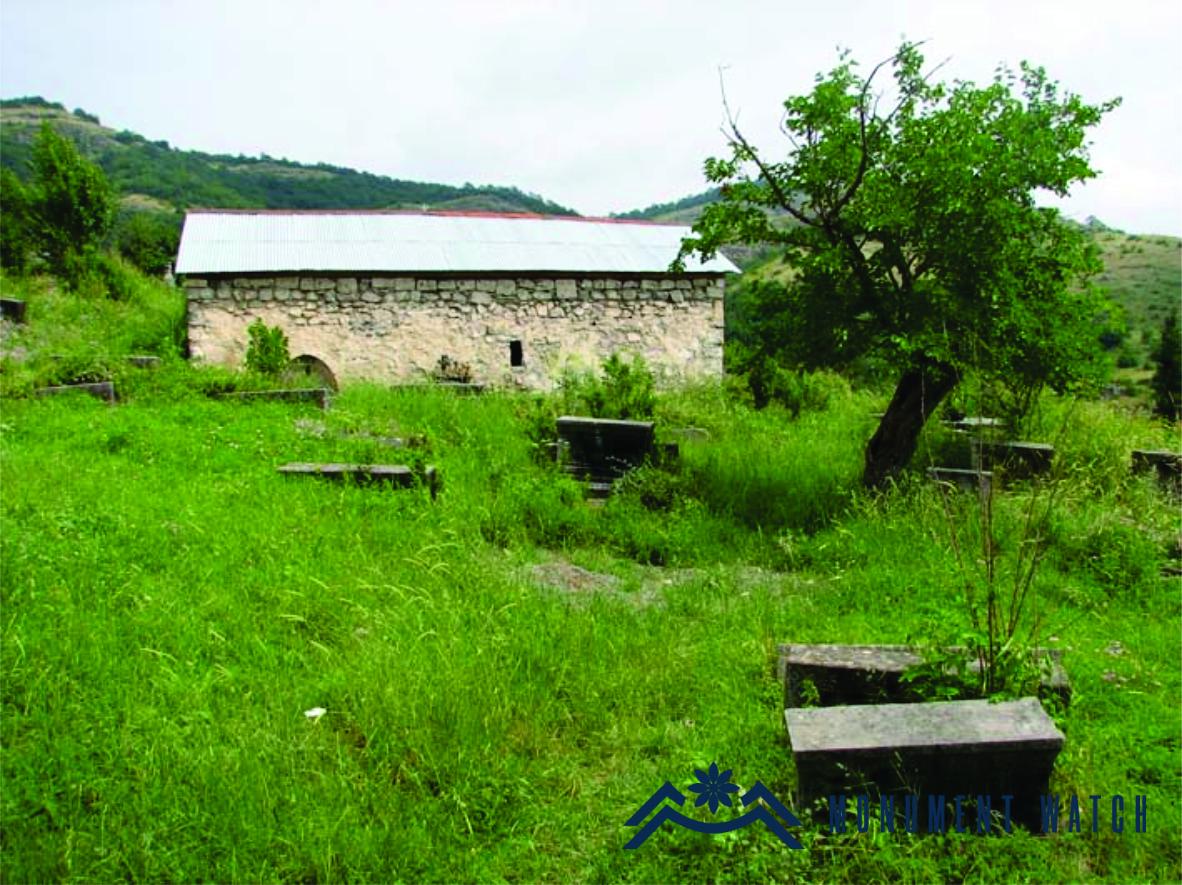The Surb Vanes Church of Aygestan
Location
The Surb Vanes (Hovhannes) Church is 600 meters north of Aygestan (formerly Balujja) village in the Askeran region of Artsakh. The church stands in the center of an old cemetery near the former village site (Fig. 1).
Historical overview
There is no information regarding the construction of Surb Vanes Church and the walls of the building lack inscriptions. Based on its architectural style and structural features, the church is believed to have been built in the 18th and 19th centuries. Information about the church is found in Makar Barkhudaryants' work "Artsakh," where it is mentioned among other details: "On the northern side of this village is an old settlement, a cemetery, and a church called Surb Vanes, built of stone and lime. It is a major place of pilgrimage and a cemetery where the bones of the brave inhabitants of the village of Pallucha are buried" (Barkhudaryants 1895, 155).
Around the old cemetery and the church lies the active cemetery of Aygestan village (Fig. 2).
Architectural-compositional examination
The church is a single-nave vaulted hall with external dimensions of 11x6.5x3.5 meters, constructed from local rough and semi-finished stones. The arches and corner stones of the hall and the bema are polished. The vault rests on two pairs of arches on the southern and northern walls, and the roof is gabled. Built on a gentle slope, the western side is partially embedded in the soil. The only entrance is at the western corner of the southern facade. The entrance to the church, except for the vaulted upper part of the nave, is almost entirely located at a lower level than the outer plane (Fig. 3). Inside, the church features a rectangular hall with a semicircular tabernacle on the eastern side (Fig. 4).
The tabernacle has two small niches on the side walls. There are no sacristies in the church. On the north wall, there is a baptismal font within an arched niche on the inner side of the east wall. The church is illuminated by one small window on each east, south, and west sides. The original roofing sheets were not preserved, and during the period of independence, the roof was covered with metal sheets (Fig. 5).
The condition before, during, and after the war
The church functioned as a sanctuary and remained undamaged during the first and second Artsakh wars. However, as a result of military operations on September 19-20, 2023, Artsakh was completely occupied by Azerbaijan, and the population of Aygestan village was forcibly displaced. There is currently no information about the state of the monument.
Bibliography
- Barkhutareants 1895 - Barkhutareants M., Artsakh, Baku.
The Surb Vanes Church of Aygestan
Artsakh





